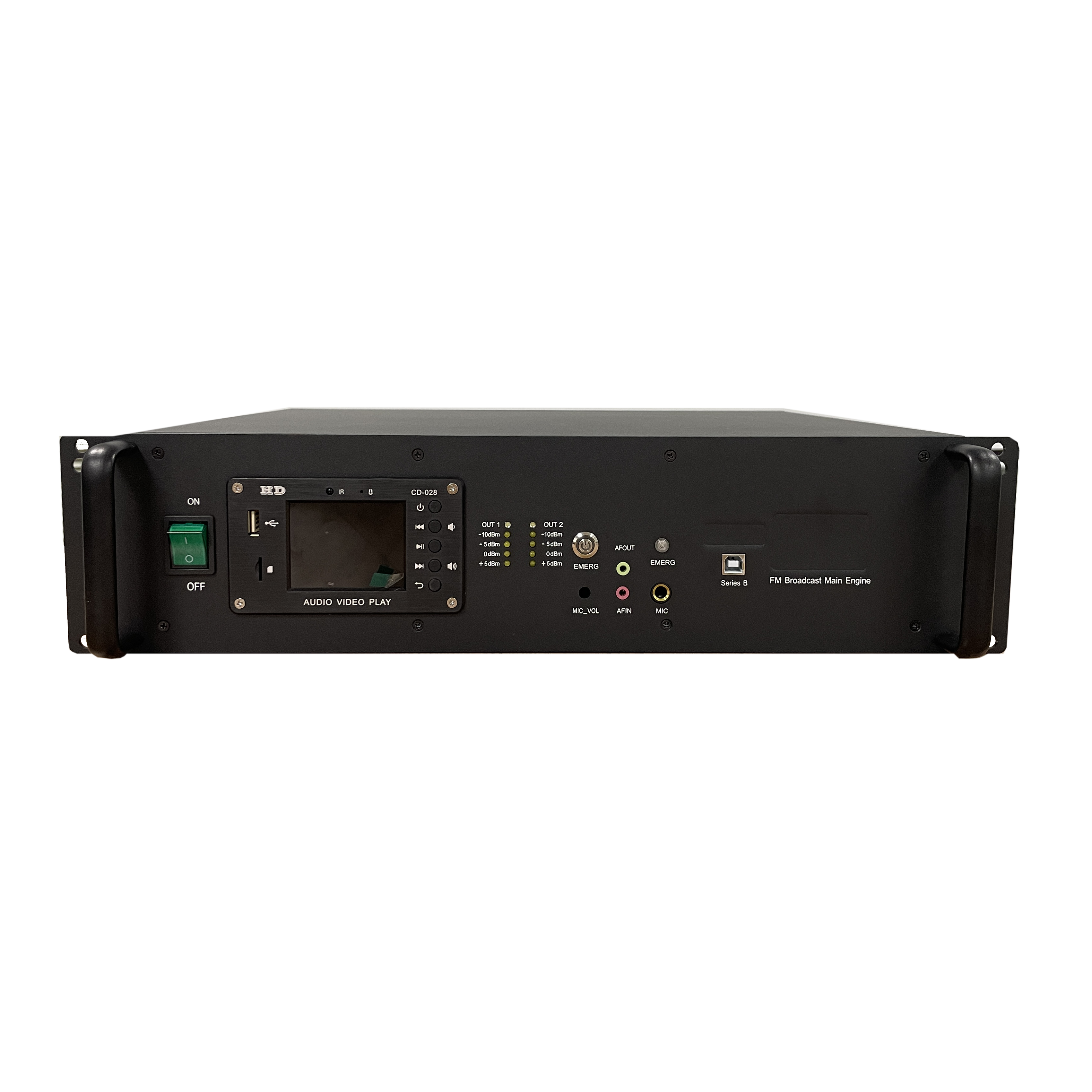
Focusing on the digitalization of the communication industry for 22 years
Just to provide better services for customers




The FM broadcasting host is designed to receive and process external RF signals from a designated coverage area. After frequency selection, it demodulates the incoming RF signals into audio, then re-modulates the audio onto new RF frequencies for rebroadcast within the coverage area.
These re-transmitted signals can be distributed via:
Coaxial feeders
Fiber optic master repeaters
Fiber Optic remote units
Or other components within the coverage distribution system
Emergency Broadcast Insertion Function:
A key feature of the FM broadcasting host is its emergency broadcast capability. In critical situations, the system allows the duty officer in the central control room to:
Manually or automatically interrupt the regular FM broadcast
Insert emergency audio notifications using software or hardware controls
During an emergency, vehicles within the coverage area—such as tunnels, expressways, or enclosed spaces—can receive the emergency message via any FM frequency on their in-car radios. Once the emergency broadcast concludes, the system automatically or manually resumes normal FM programming by switching back to the original external signal source.
Emergency Broadcast Function
In emergency situations, the central dispatch platform at the monitoring center can remotely activate the emergency broadcast function. The sequence operates as follows:
Signal Override:
Upon receiving a command from the dispatch platform, the FM broadcasting host interrupts the regular FM signal and activates a pre-set emergency voice broadcast. The system forces the emergency broadcast signal into the coverage area, temporarily blocking the normal outdoor FM signal.Live Voice Insertion:
Operators can use a microphone for live announcements. When live voice input is detected, the system automatically disables the pre-recorded alarm tone, allowing only the operator’s real-time voice to be heard across the entire coverage area.Flexible Frequency and Channel Configuration
* Supports up to 16 frequency selection modes by default (customizable to 24 or 32 frequency points).
* Supports forced insertion of up to 16 emergency voice channels for different zones or messages.System Monitoring and Interface Options:
Comes standard with local monitoring software for system diagnostics and control.
Equipped with an LED LCD screen for real-time status display.
Features both built-in voice playback and external audio input interfaces.
| Description | Technical parameters |
| Specifications | 8/16 frequency selection (including tight broadcast insertion) |
| Frequency range | 87-108MHz |
| Maximum output | 0dBm /40dBm adjustable |
| Maximum input power | -10 dBm |
| Gain | 60dB±5dB/90dB±5dB |
| Intra-band fluctuations | ≤2dB |
| Voltage standing-wave ratio | ≤1.5 |
| Intermodulation attenuation | ≤-40dBc/30kHz |
| Dorsal inhibition | Working frequency band edge ±5MHz: ≥70dBc |
| Working frequency band edge ±10MHz: ≥70dBc | |
| Humidity | 5% to 95% RH |
| working temperature | -30℃ to ﹢60℃ |
| Storage temperature | -40℃ to +85℃ |
| Impedance | 50Ω |
| Connector | N-K connector( female) |
| Size | 2.5U |
Name:Changbo (Shanghai) Communication Technology Co., Ltd
Phone:+86-21-55090630/31/32
Email:cb@changbo.com.cn
Address:4th Floor, Building 2, Dehui Technology Park, No. 358 Liuyuan Road, Baoshan District, Shanghai
Global Unified Hotline
021-55090630/31/32
Scan
Follow WeChat official account


